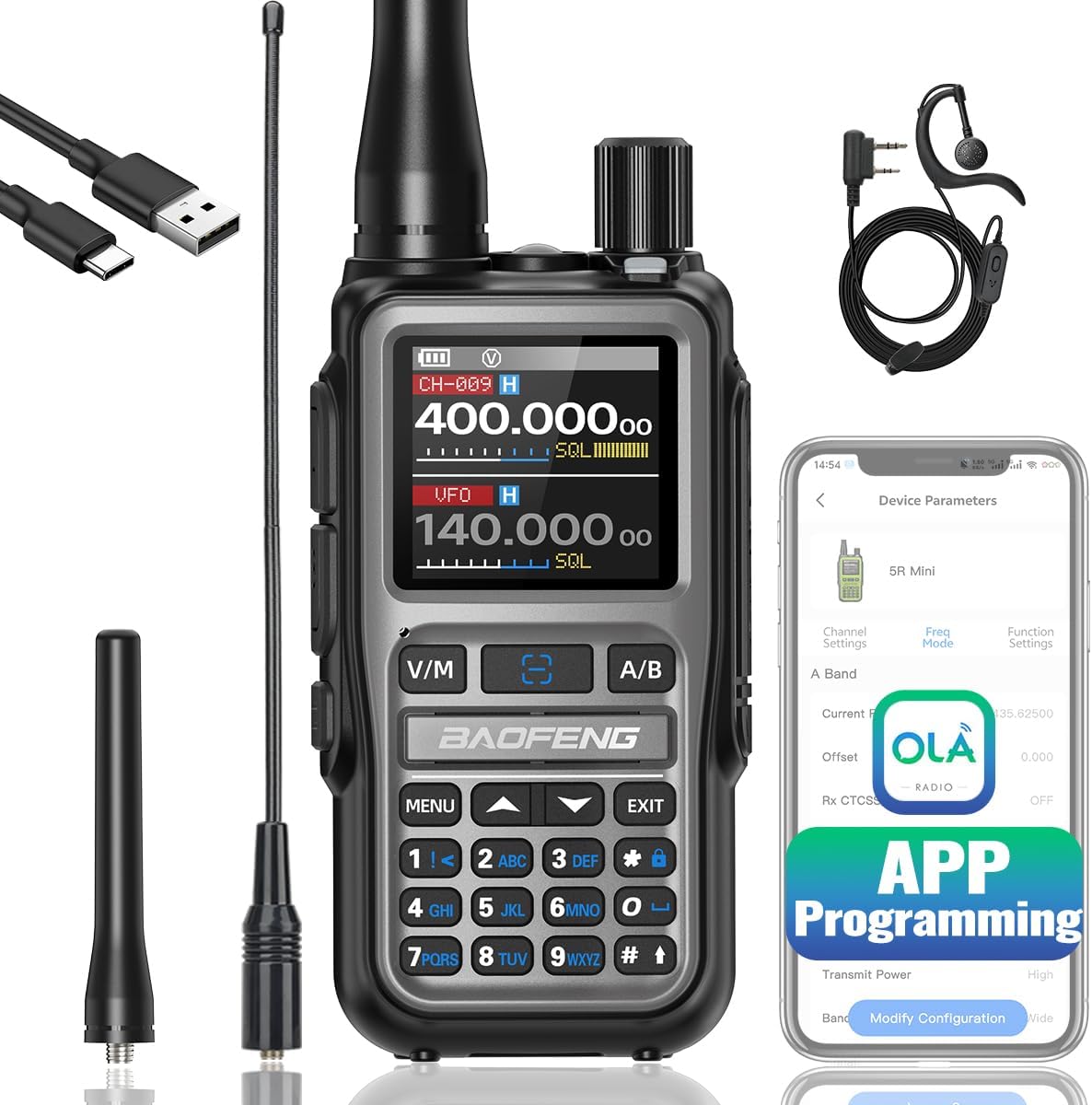
Overview
The FONGHOO HAM-UV25 is a dual-band mobile radio transceiver designed for amateur radio enthusiasts, particularly for those who need reliable communication on the go. With its 25W output power and frequency range of 144-148 MHz (VHF) and 420-450 MHz (UHF), it promises robust performance for both casual users and serious operators. In this review, we will delve into its features, performance, ease of use, and overall value.
Design and Build Quality
The FONGHOO HAM-UV25 sports a compact and rugged design, making it suitable for installation in various vehicle types. The radio measures approximately 6.7 x 5.1 x 1.8 inches, which allows for flexible mounting options without taking up excessive space. The front panel features a large, easy-to-read LCD display that shows frequency, channel, and status information.
The build quality feels sturdy, with well-constructed knobs and buttons that provide tactile feedback. The unit includes a detachable microphone with a coiled cord, allowing for easy communication without being tethered directly to the device.
Key Features
Dual-Band Operation: The ability to operate on both VHF and UHF bands allows users to access a wide range of frequencies and communicate with a variety of other amateur radios.
25W Output Power: The 25W output ensures good signal strength, enabling clear communications over long distances, depending on terrain and conditions.
Wide Frequency Range: Covering 144-148 MHz and 420-450 MHz, this transceiver allows for versatile usage in various amateur radio activities, including local and emergency communications.
CTCSS/DCS Functionality: The inclusion of Continuous Tone-Coded Squelch System (CTCSS) and Digital-Coded Squelch (DCS) adds an extra layer of functionality, allowing for selective calling and reducing unwanted noise.
Memory Channels: The HAM-UV25 can store up to 200 memory channels, allowing users to quickly switch between frequently used frequencies.
Emergency Alarm Function: This feature can be invaluable in emergencies, ensuring that help can be requested promptly.
Wide/Narrow Bandwidth Selection: Users can toggle between wide and narrow bandwidths, providing more control over signal clarity and range.
Included Accessories: The package comes with necessary accessories including a power cable, mounting bracket, and user manual.
Performance
The performance of the FONGHOO HAM-UV25 is commendable, especially for a mobile transceiver in its price range. Users report clear and stable audio quality during transmission and reception, with minimal distortion. The 25W output power proves effective in both urban and rural settings, allowing for good range.
In practical use, the dual-band functionality shines, providing seamless switching between VHF and UHF channels. The CTCSS/DCS features work well in filtering out unwanted communications, allowing for more focused conversations. Users have noted that the radio performs exceptionally well in various conditions, including during adverse weather.
Ease of Use
While the FONGHOO HAM-UV25 is packed with features, it is relatively user-friendly. The user interface is straightforward, with clearly labeled buttons and a menu system that is easy to navigate. New users may take some time to familiarize themselves with all the functions, but the included manual provides clear instructions.
Programming the radio for specific frequencies is simple, and the memory channels can be easily accessed. The backlit display is a thoughtful touch, making it usable in low-light conditions, such as nighttime driving.
Value for Money
Considering its features, performance, and build quality, the FONGHOO HAM-UV25 offers excellent value for amateur radio operators. It provides a robust set of functionalities at a competitive price point, making it accessible for both newcomers and seasoned users.
Pros and Cons
Pros:
- Dual-band operation for versatile communication
- Strong 25W output power
- Clear audio quality
- Sturdy build and design
- User-friendly interface
- Good memory channel capacity
Cons:
- Initial learning curve for complete beginners
- Limited advanced features compared to higher-end models
Conclusion
The FONGHOO HAM-UV25 Dual Band Mobile Radio Transceiver is a good choice for amateur radio enthusiasts seeking a reliable and powerful mobile solution. Its blend of robust performance, user-friendly features, and excellent build quality make it a worthy investment for anyone looking to enhance their communication capabilities while on the road. Whether you’re a seasoned ham or a newcomer, the HAM-UV25 is likely to meet or exceed your expectations, making it a commendable addition to your radio equipment.



